Abstract
1. The effect of atropine sulphate and of (+)-tubocurarine chloride (TC) on the amplitude and time course of end-plate potentials (e.p.p.s) and miniature end-plate potentials (m.e.p.p.s) was studied in the sartorius muscle of the frog.
2. Atropine sulphate reduces the amplitude of intracellularly recorded e.p.p.s and m.e.p.p.s, in concentrations 100 times higher than TC (6 × 10-5 M for 50% reduction of amplitude compared with 6 × 10-7 M for TC).
3. Atropine sulphate causes a marked shortening of both e.p.p.s and m.e.p.p.s: when the amplitude of e.p.p.s or m.e.p.p.s is reduced by 50%, their rise-time and half-decay time are both shortened by 40%. The corresponding shortening produced by TC is 15%.
4. E.p.p.s prolonged by prostigmine 10-6 g/ml. undergo a larger shortening (30%) in TC, while atropine-induced shortening related to the corresponding drop of amplitude is the same whether prostigmine is used or not.
5. On repeated applications after recovery of amplitude and time course, TC loses its shortening effect on e.p.p.s while the atropine shortening effect remains unchanged.
6. Atropine sulphate shortens the rise-time but not the falling phase of brief depolarizations produced by electrophoretic applications of acetylcholine (ACh) to the muscle fibre surface in the end-plate region. It also reduces their amplitude, in the same way that it reduces the amplitude of e.p.p.s.
7. Atropine sulphate in concentrations which markedly reduce the amplitude and time course of e.p.p.s has no effect on their quantum content.
8. Atropine sulphate at a concentration of 10-4 M does not change the amplitude and time course of an electrotonic potential produced by a rectangular current pulse passed through the end-plate region of a muscle fibre.
9. It is suggested that either enhanced removal of ACh or a spatial gradient of effectiveness of the blocking drugs, or both these mechanisms, participate in shortening the e.p.p. by atropine sulphate and TC.
Full text
PDF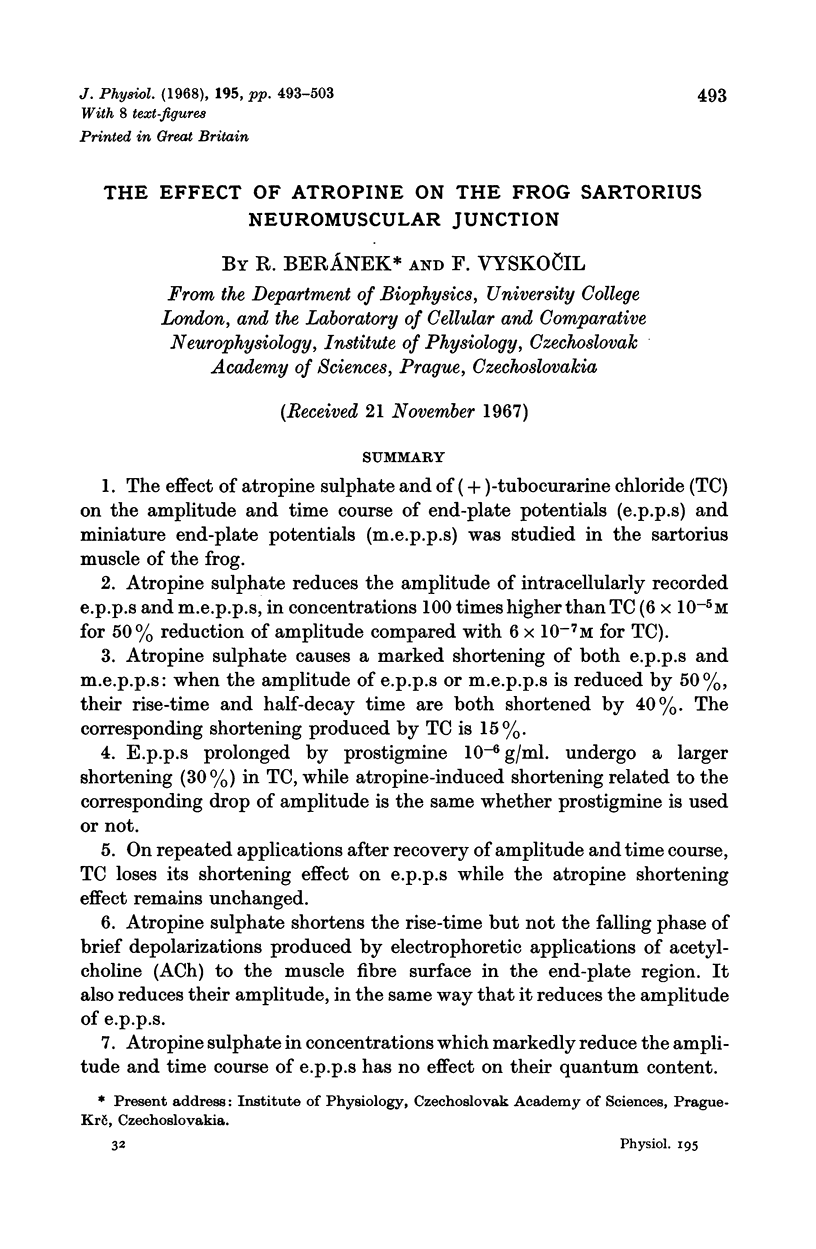
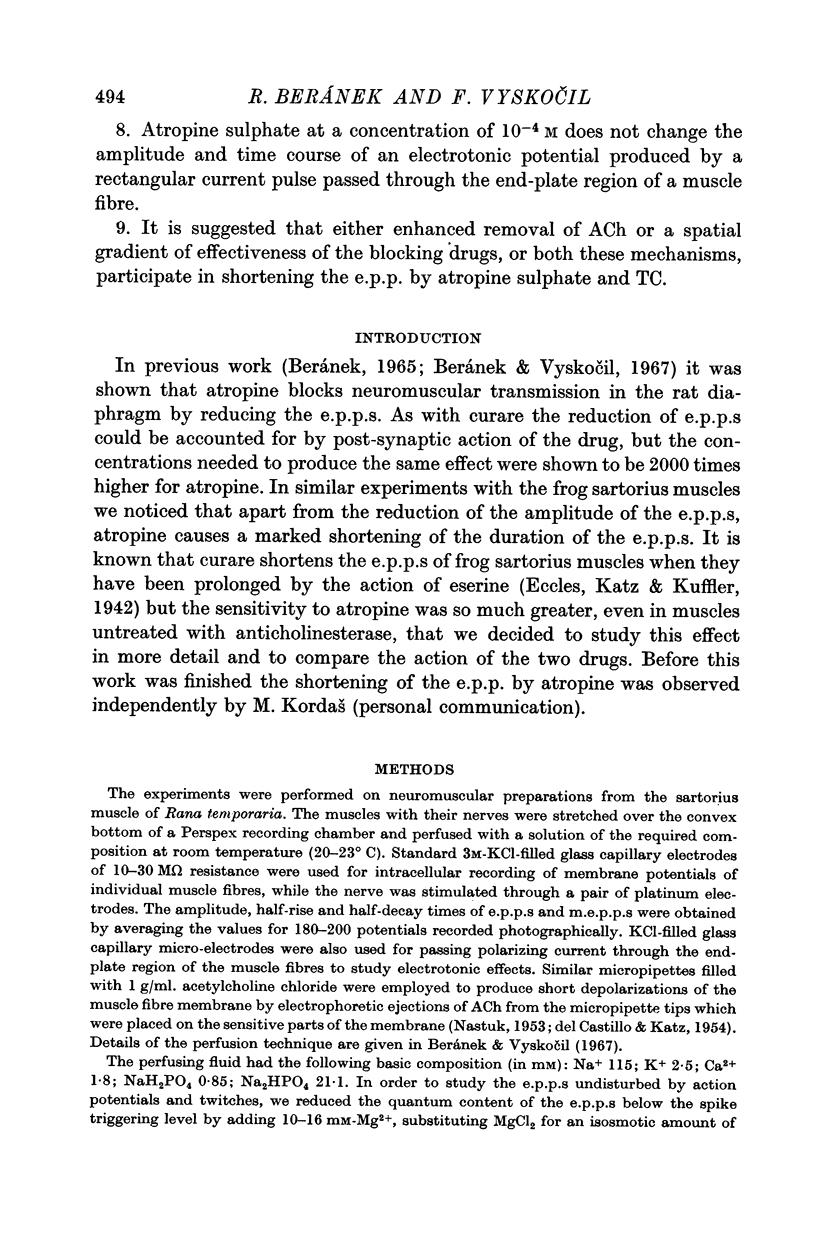
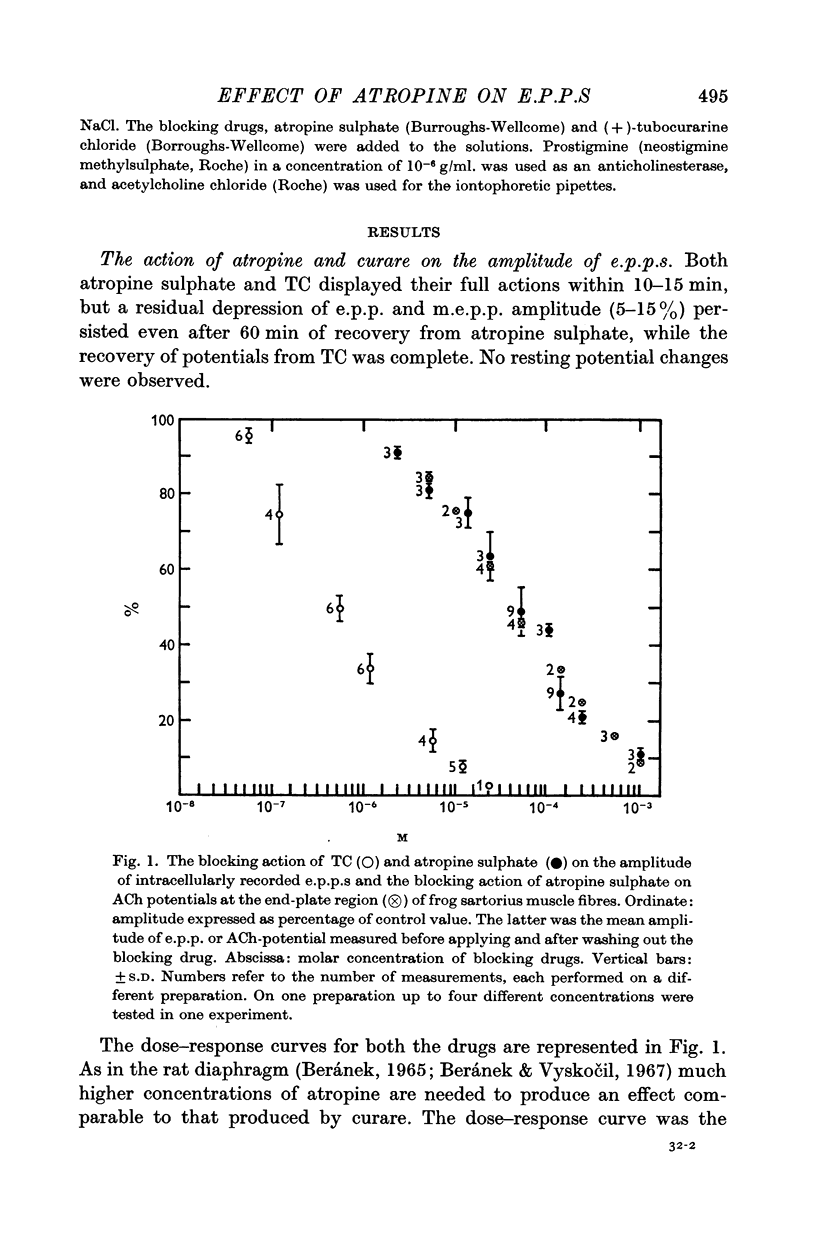
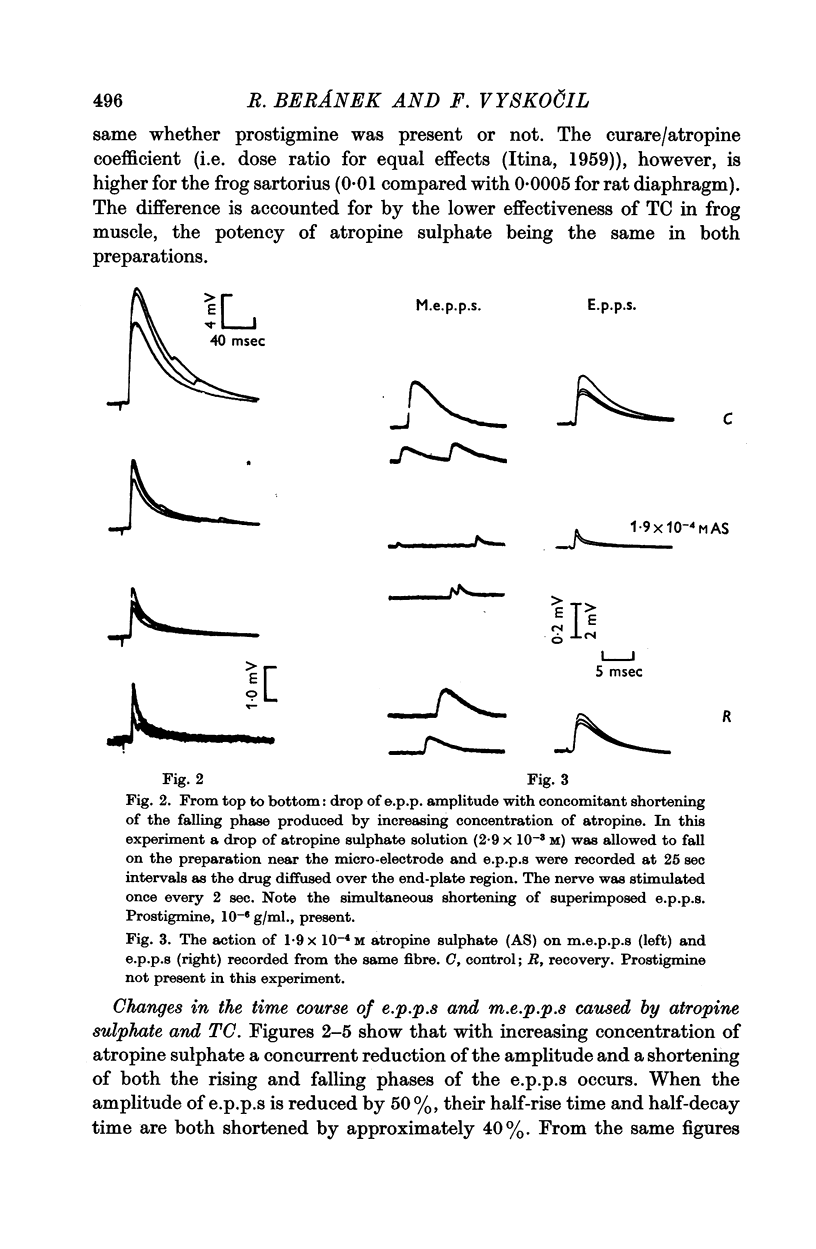
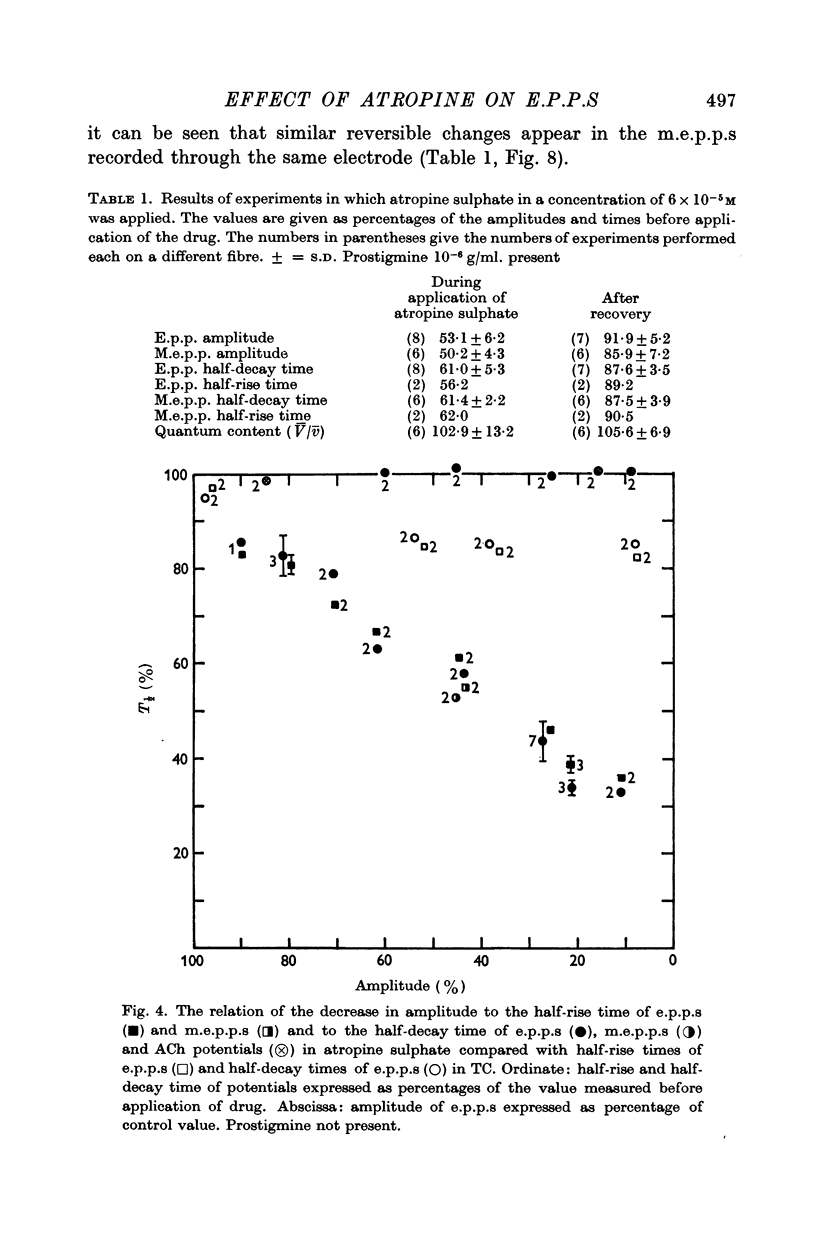
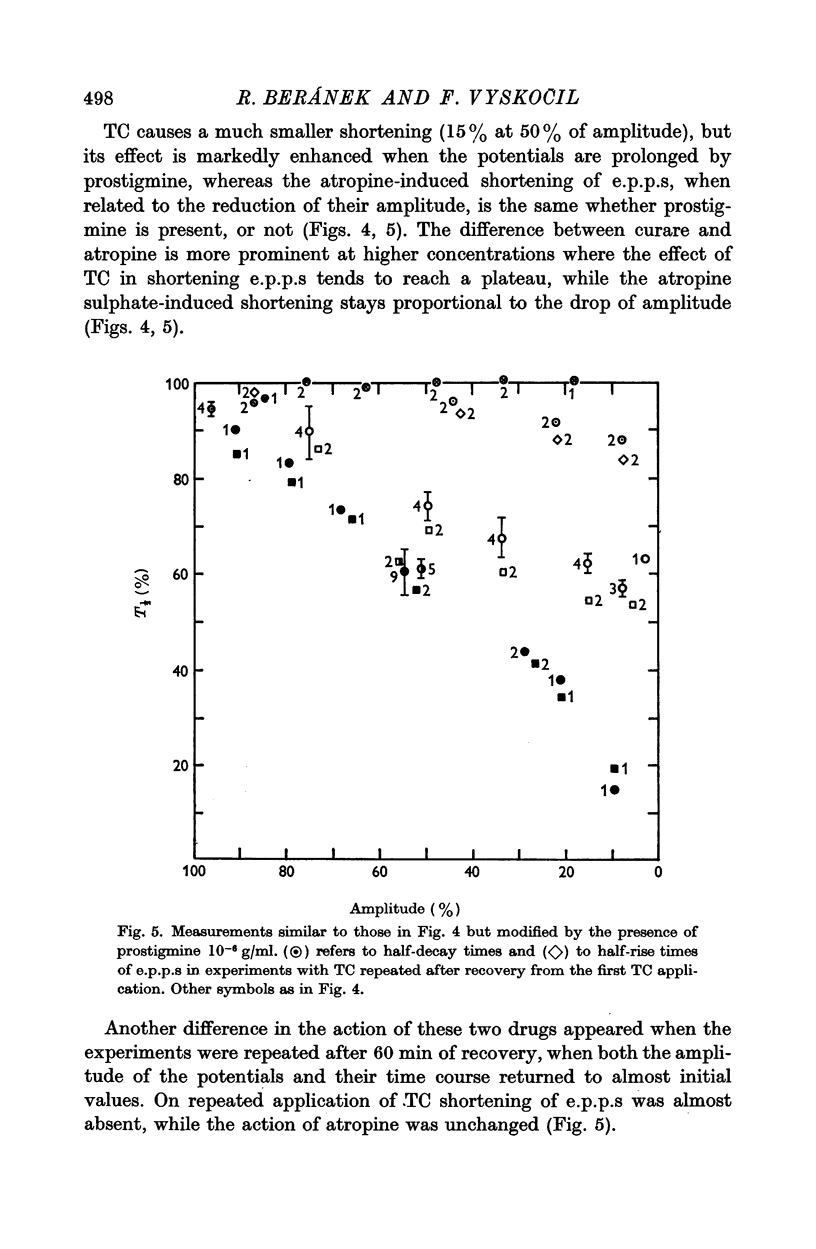
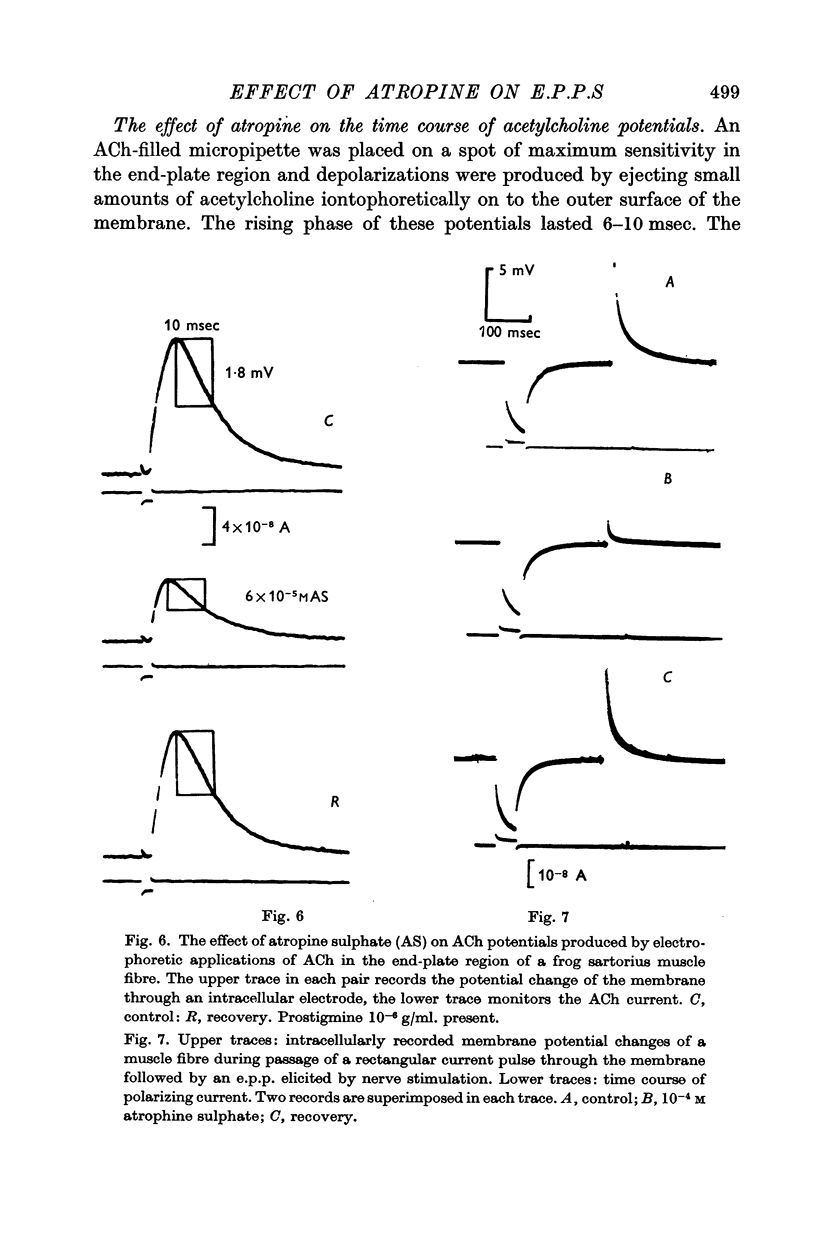
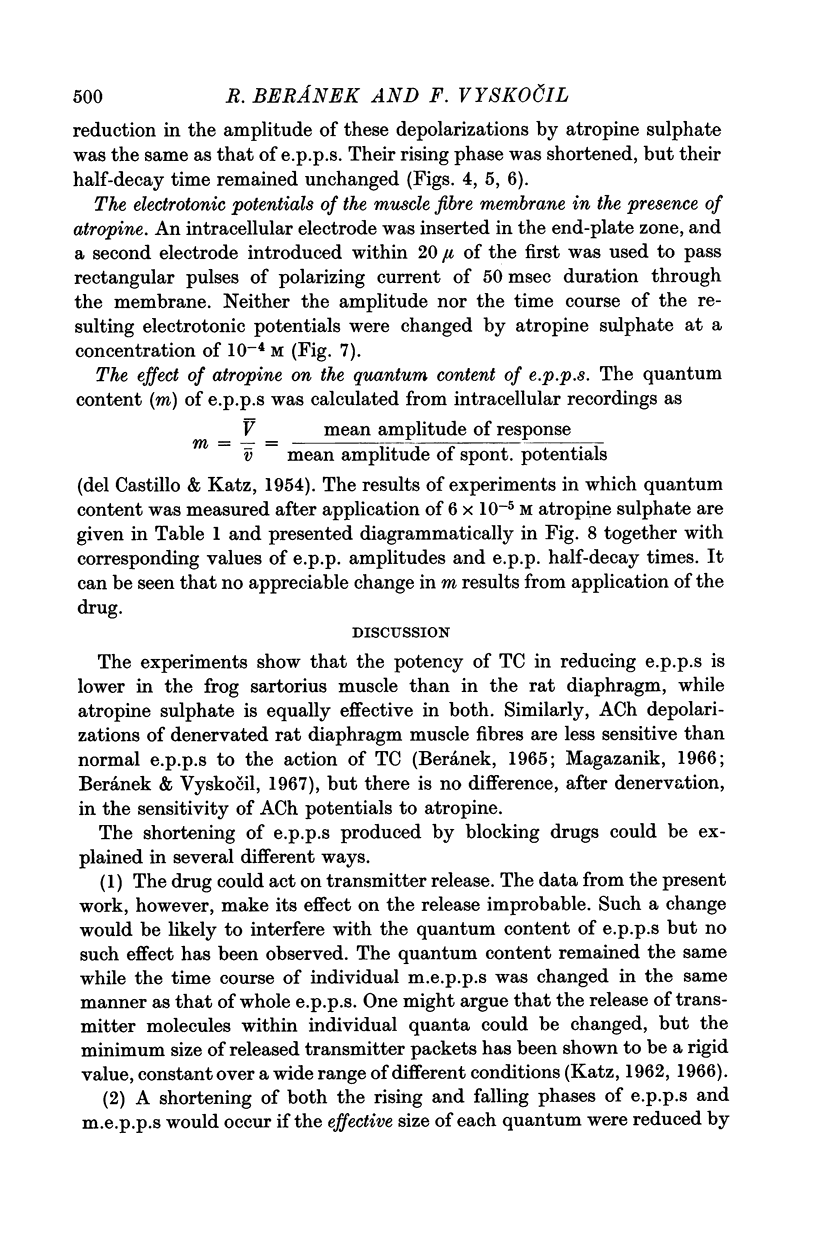
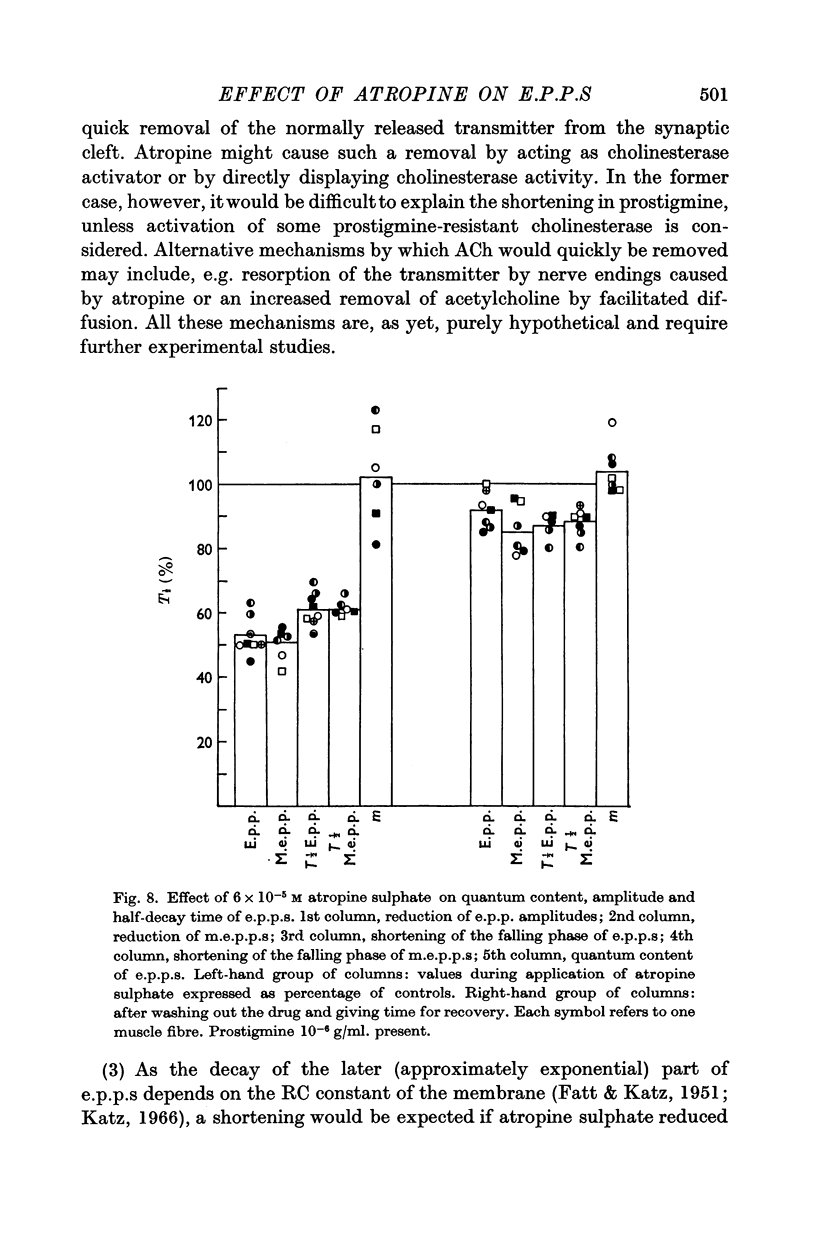
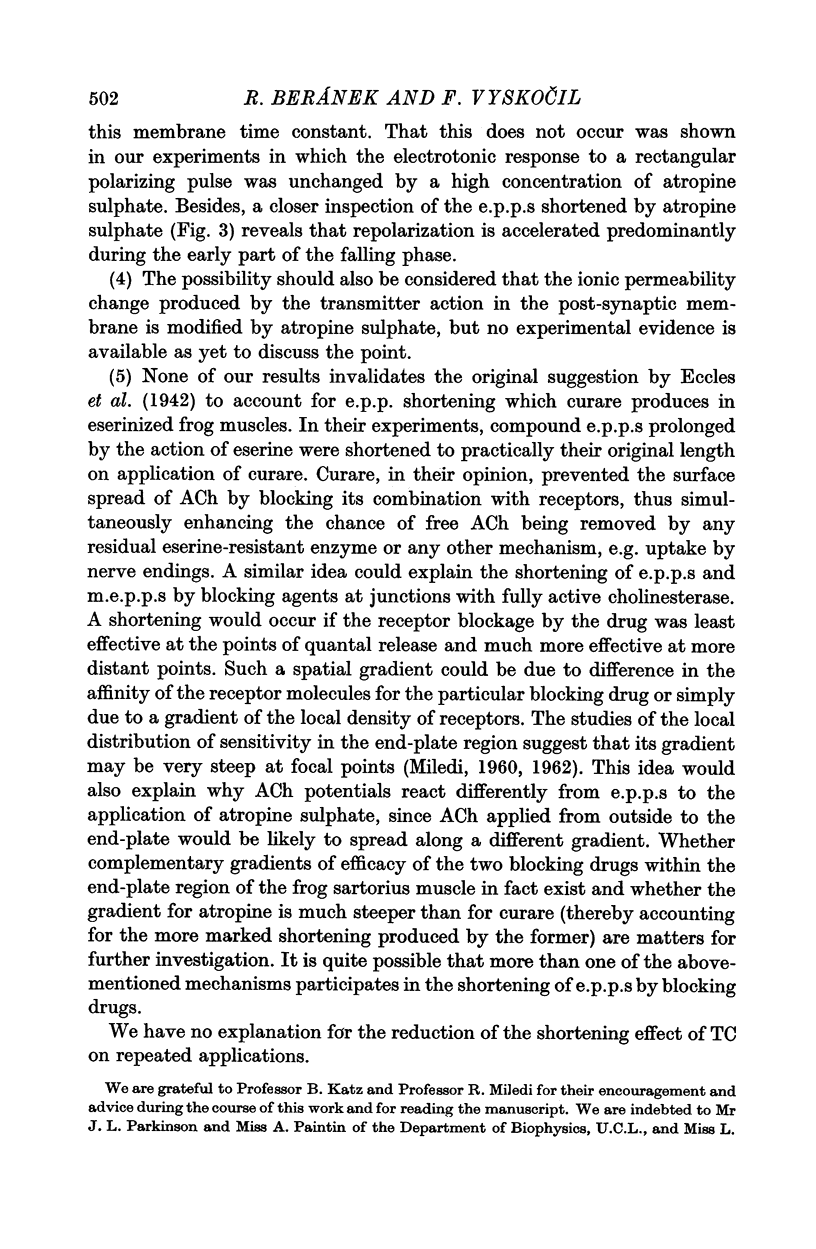
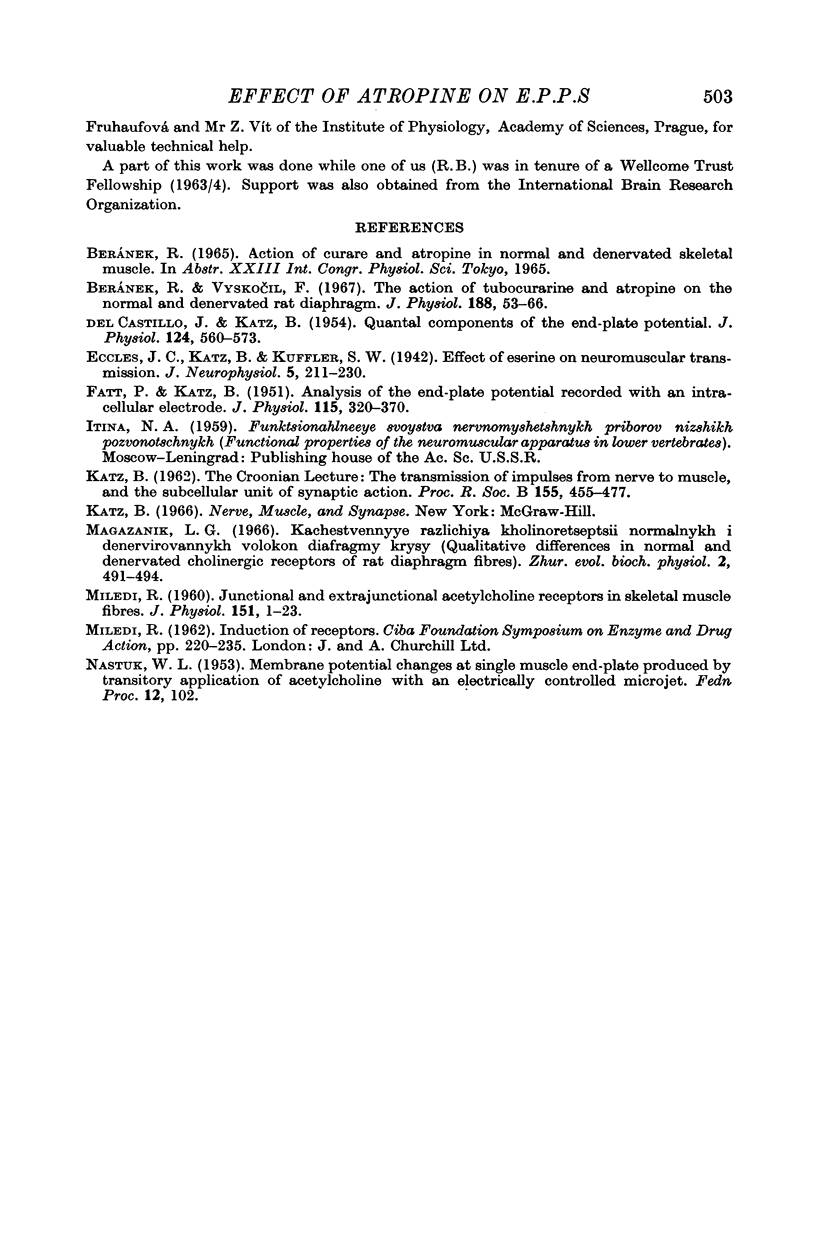
Selected References
These references are in PubMed. This may not be the complete list of references from this article.
- Beránek R., Vyskocil F. The action of tubocurarine and atropine on the normal and denervated rat diaphragm. J Physiol. 1967 Jan;188(1):53–66. doi: 10.1113/jphysiol.1967.sp008123. [DOI] [PMC free article] [PubMed] [Google Scholar]
- DEL CASTILLO J., KATZ B. Quantal components of the end-plate potential. J Physiol. 1954 Jun 28;124(3):560–573. doi: 10.1113/jphysiol.1954.sp005129. [DOI] [PMC free article] [PubMed] [Google Scholar]
- FATT P., KATZ B. An analysis of the end-plate potential recorded with an intracellular electrode. J Physiol. 1951 Nov 28;115(3):320–370. doi: 10.1113/jphysiol.1951.sp004675. [DOI] [PMC free article] [PubMed] [Google Scholar]
- MILEDI R. The acetylcholine sensitivity of frog muscle fibres after complete or partial devervation. J Physiol. 1960 Apr;151:1–23. [PMC free article] [PubMed] [Google Scholar]


